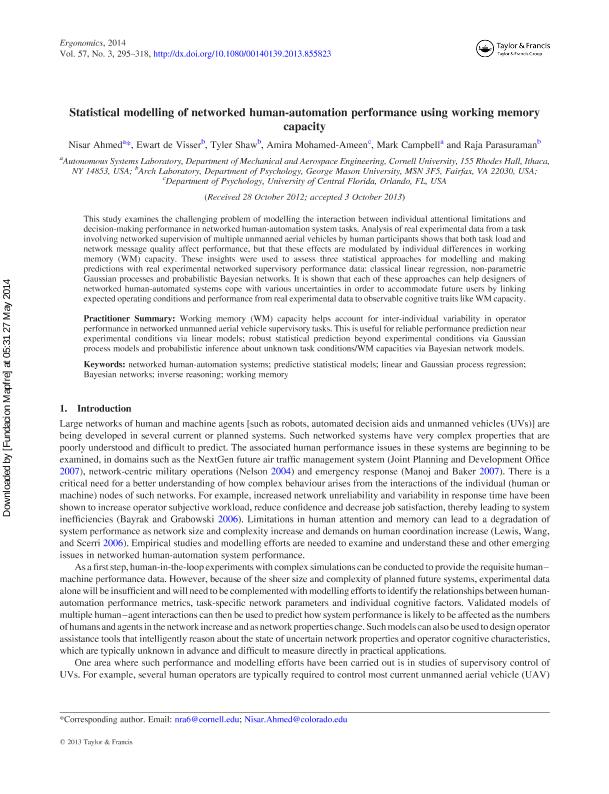Statistical modelling of networked human-automation performance using working memory capacity

Contenido multimedia no disponible por derechos de autor o por acceso restringido. Contacte con la institución para más información.
| Tag | 1 | 2 | Valor |
|---|---|---|---|
| LDR | 00000cab a2200000 4500 | ||
| 001 | MAP20140019281 | ||
| 003 | MAP | ||
| 005 | 20140530130412.0 | ||
| 008 | 140527e20140303esp|||p |0|||b|spa d | ||
| 040 | $aMAP$bspa$dMAP | ||
| 084 | $a875 | ||
| 245 | 0 | 0 | $aStatistical modelling of networked human-automation performance using working memory capacity$cNisar Ahmed...[et.al] |
| 520 | $aThis study examines the challenging problem of modelling the interaction between individual attentional limitations and decision-making performance in networked human-automation system tasks. Analysis of real experimental data from a task involving networked supervision of multiple unmanned aerial vehicles by human participants shows that both task load and network message quality affect performance, but that these effects are modulated by individual differences in working memory (WM) capacity. These insights were used to assess three statistical approaches for modelling and making predictions with real experimental networked supervisory performance data: classical linear regression, non-parametric Gaussian processes and probabilistic Bayesian networks. It is shown that each of these approaches can help designers of networked human-automated systems cope with various uncertainties in order to accommodate future users by linking expected operating conditions and performance from real experimental data to observable cognitive traits like WM capacity. | ||
| 773 | 0 | $wMAP20100019818$tErgonomics : the international journal of research and practice in human factors and ergonomics$dOxon [United Kingdom] : Taylor & Francis, 2010-$x0014-0139$g03/03/2014 Volumen 57 Número 3 - marzo 2014 |

